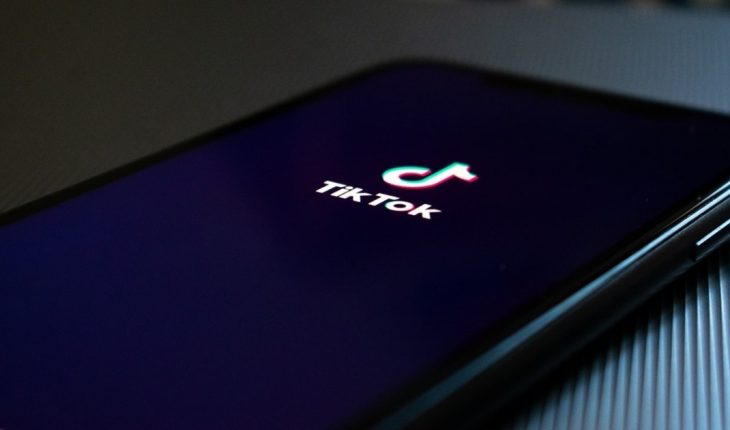We thought TikTok was for tweens and teens at first, didn’t we? But gradually we saw that our more “performers” friends or with less modesty to perform in front of the camera were adding up. Then he made an esx otrx amigx account that he is so extrovertidx is not, but he wanted to try. And so, without realizing it, we were suddenly sailing in that sea of dances, lypsinc, upbeat and hyper saturated songs, tutorials, jokes and even magic tricks. Oh, yes, and a lot, but muuuucho beboteo. Because obviously, what social network is free from the beautiful discipline of feeling atractx and showing it to the world? And as well as any other social network, to improve the user experience, the TikTok algorithm adapts to the preferences of each account to offer you content similar to the one you already looked and liked, but also something new that you might like. However, much of what transcends the platform – which is re-uploaded to others, such as Instagram or YouTube – are, for the most part, usuarixs that conform to the standards of beauty considered hegemonic and, after all, for those who are not inhabited in the community, it seems that’s all there is. That’s why we talk to those who curate the app on a daily basis to check if what’s perceived from the outside is really what’s going on inside.
But first, a couple of basic facts: TikTok was born in China in 2016 under the name Douyin and earned its current title for international marketing. Two years later, ByteDance, owner of the app, buys Musical.ly and merges both apps. That’s when its global overstification begins to brew, what is it? If you’ve already updated Instagram and met the “Reels” you can get an idea: short (15 seconds) or long (30–60 seconds) videos that most people dance up; making lypsinc of some known song, dialogue or audio; jokes; advice and challenges. Or bebotage.” For me the content that has been the most garpa lately,” says Cande Copello, a 20-year-old Argentine tiktoker that already gathers 3.5 million followers in the watch network and another 97.7 million likes. “I recently thought to search and create jokes that they didn’t make and did very well for them. Also spoken videos do very well because people know your voice (which in TikTok does not happen much), and they hear interesting things in a short time”. Caro Ferrari, meanwhile, became popular on the social network for making crafts with cold porcelain, especially food-shaped arites, from Milanese to Oreos. “I think it’s depends: there are people who dance have a lot of likes and others that show their work routine as well. Maybe I think what you see most are dances and comedy.”
Juan Iannotti, administrator of the YouTube channel The Best TikTok, who with his compilations has reached 15.5 million views in total, analyzes it from what works best in his videos: “What most garpa are the videos dancing Bad Bunny themes, but what led the channel to grow so much were the humor videos”. And within that content that more garpa, there is also who garpa the most? Is the content of certain people privileged to the detriment of others based on their approach to hegemony?” I think so,” copello says. “In fact, I learned about it very recently, and it’s true on the one hand, but on the other hand you have to remember that in For You (the feed that TikTok creates especially for each user) beyond the leaking of many things, it is the people who decide what goes viral.”
Ferrari disagrees: “I feel that it does not favour the content of these people; it’s an algorithm and I don’t think you’ll notice that. Sometimes you happen to see a video that had a lot of repercussion and at the same time I reject the comments because it doesn’t fit with the beauty standards, but I think the app is not that it privileges that but shows it by how much you interact with that video.” The admin of the YouTube channel agrees: “I think TikTok as a platform does the opposite, since it has a different algorithm than all the others, highlights in the feed the content of absolutely all users and ranks them according to the playback time, shared, visits to the profile and some more metrics. You don’t have to be beautiful to be on the home screen, but a lot of users, as in all other networks, value hegemonic figures more.” Right on the account of The Best TikTok, the covers of the compiled are mostly women with hegemonic bodies used as clickbait. Even in the comments is commonly found someone who marks the minute when “the girl on the cover” appears with the phrase “To what they came”.
You have to understand that this is not something unique to TikT either.ok, but it happens on most (but all) social media. The objective of analyzing under these criteria the Chinese app has to do with its recent viralization and perpetration in different age groups of society, not just in adolescents. But there is something that is (or rather, was) particular to this application in terms of content offering and generated a scandal: last December, the German medium netzpolitik.org accessed the guide used by the moderators of the app to, precisely, moderate the content. From there it emerged that this manual guided its managers to limit the arrival of content created by queer people, fat or with different capacities. It depends on the “vulnerability” detected in the user (in this case, vulnerability considered as the possibility that they may suffer bullying by others) two paths could be taken: 1. That content be available only in the country of creation 2. That, when reaching a certain number of views (from 6,000 to 10,000) it goes into the category of “not recommended” and has almost no audience. How was this vulnerability determined? The manual indicates this: those who had some facial deformity, autism, or Down syndrome, among other things, had to be marked as vulnerable in order to limit their content and prevent them from suffering from bullying. And all this had to be judged by moderators from a 15-second video. The line drop came directly from Beijing, where ByteDance is headquartered, and initially opted to minimize the staff of managers’ claims (who called for changing these policies), until they finally de-opted this initiative.
Such a policy is not only not the way to combat bullying because it basically censors content and avoids the visibility of these people and their respective realities, preventing and not taking action against the bullies, but also contributes to the idea of this app reigned solely by hegemony.” In response to an increase in bullying within the app, we implement temporary and forceful policies about it. This was never designed to be a long-term measure, but a way to handle a problematic trend until our equipment and controls for the user could be up to date. Although the intention was good, the approach was the wrong one and since then we have changed this initial policy in favor of more nuanced measures against bullying as well as protections within the platform,” says Noel Nuez, TikTok Country Manager for South America, to Filo.News.Bullying (or cyberbullying in this case) is a recurring problem on many social networks , but in TikTok it has its own peculiarities.” There’s the option to respond to comments by video and you often see someone upload a video dancing and, I don’t know why, someone criticizes their weight. Well, the person responds, but then you come up with the comments and people keep criticizing them,” says Ferrari, 16, who seems to have come across this situation on numerous occasions. “That person is showing his dance, why do you have to criticize him that way? It’s people who don’t care about anything, they don’t even have a profile picture and go and comment on anything without thinking about the other person and how they can feel when they read it. It’s people you later commented on and they say, ‘Sorry, I didn’t know you were going to see it.'”
“There’s a lot more hate in TikTok than on other networks. I think it matched Twitter,” says Copello, who, like many, has had his own experiences about it: “They’re looking for egg hair. Luckily, in my case it’s mild hate because I never get into controversial issues and I keep an image a long time ago.” Promoting a positive and safe environment is our priority”, they assure from TikTok when asked how they perceive this situation from the company and what they do to counter it. “We have implemented a combination of moderation policies, technologies, and strategies to detect and review problematic content and accounts. We have a number of publicly available user policies and resources, while reinforcing a set of community guidelines and terms of service. In addition, we offer a number of security controls and tools. All of this is a complex challenge at the industry level so we are consistently evaluating and refining our protective measures in our commitment to users.” Copello also takes some time to point out that in this sea of TikTok contents there is what she calls “the dark side”, the one where the users create “junk content and equally go viral”, referring to the “content of nudity, misogynistic, racist, animal abuse, etc.” Boycotting Donald Trump orchestrated by a group of k-poppers, it became very clear that TikTok is no boludez. The dances, the choreography, the dialogues, the humor; are just part of the app, as is this part, that of hate and hegemony. All that mix gives shape to this curious application that is also being banned from several countries after Anonymous ensured that it is an espionage tool. We cannot guarantee that TikTok is one thing: there is not only hatred, there are not only people who adapt to the socioculturally accepted beauty canons creating content. It’s a little bit of everything. With understanding that this exists, we come a little closer to understanding this universe, than what has as entertaining, can also have it cloudy.





